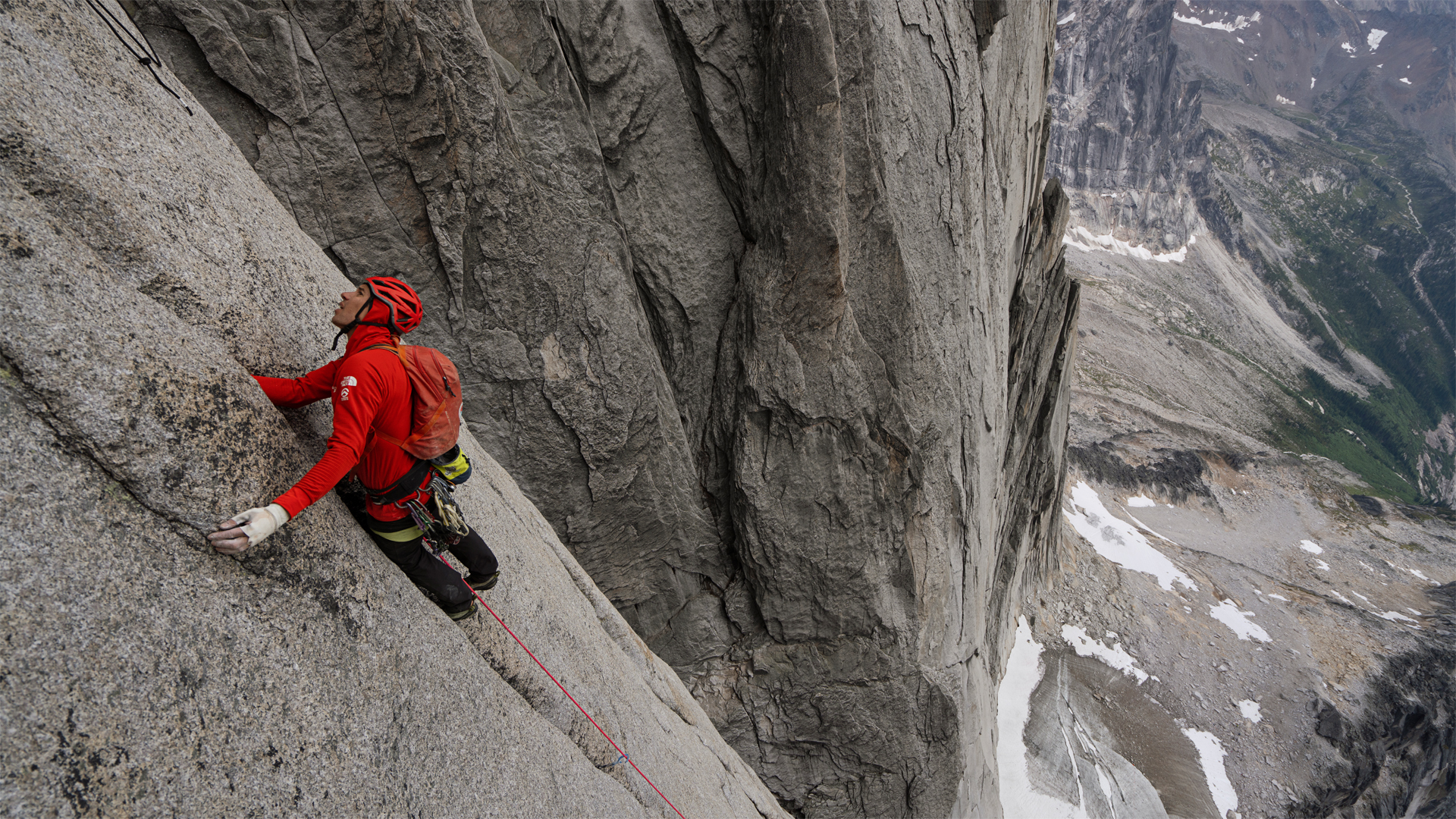After 2 knee surgeries, these are the only road running shoes I can run in pain-free – here are 4 reasons why I love them
I can’t scientifically prove that these shoes are better than others, but I can tell you that they really work for me, and maybe others

Knees. They’re a pain, as my nonna used to say.
Personally, I had no issues with my knees despite being an avid hiker for years, but then a nasty fall skiing back in the winter of 2016 changed all that. I tore my meniscus and parted ways with my ACL. A Denver surgeon made me a replacement one using part of my hamstring tendon, then after two years of hobbling around I had a cleanup surgery to remove scar tissue, some of my meniscus and hardware.
As someone who lives for the trail, this was easily one of the most challenging times in my life, but despite this setback, these days I manage to average about 100 km a month in my running and hiking shoes, according to my Coros Pace 3 watch anyway.
Here’s the thing – I didn’t really get into running in a big way until after my surgery. Back in the day, an ACL replacement usually spelled the end of a running career, but only because orthopedic surgeons told their patients not to do it anymore. These days, as explained in the journal Sports Rehab, there’s mounting evidence that people can benefit from a successful return to run post-ACL reconstruction, and it may even help.
As my surgeons explained to me during my ACL journey, running is an excellent way to strengthen your vastus medialis oblique muscle, better known as the VMO, a quadricep whose main job it is to straighten your knee, something that can be a challenge post-surgery.
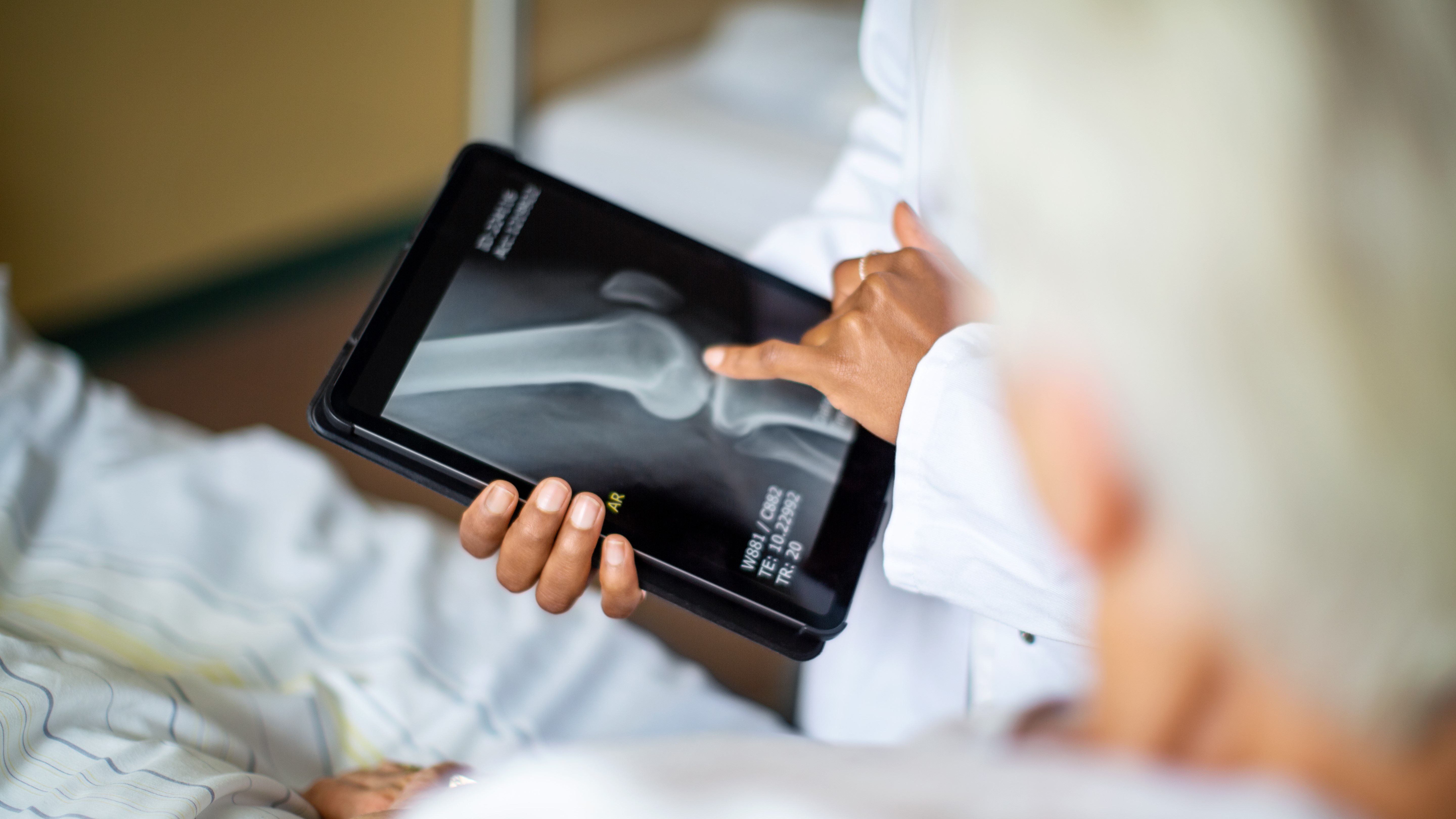
After I had fully rehabbed my knee, I began a gradual return-to-run training and when I moved back to Scotland (and sea level) four years ago, I began running more frequently, and for longer distances. Over the years, I have found that running has really helped strengthen my knee, and without it, I start to experience some pain. But not every run feels great, and I’ve learned that shoes and surface have a lot to do with my experience.
While I much prefer trail running due to the better views and soft surface underfoot, I do sometimes find that I only have time for road running, and with frequent travel, it’s sometimes my only option. The science might be out on whether running on tarmac really is worse for your joints than soft surfaces, but I know that for me, it can spell a sore knee during and after my run.
Advnture Newsletter
All the latest inspiration, tips and guides to help you plan your next Advnture!
Last year, I got a pair of Saucony Kinvara Pros, which are big, bouncy road running shoes. I don’t always love super shoes and I don’t always like the fit of Sauconys, but these shoes were a revelation to me. After several pain-free runs, both long and fast, I found myself on a press trip and extolling their benefits to another journalist. Her editor, as it turned out, was also in the ACL club, running in the same shoes and having the same experience as me.
Well over a year later and despite a mounting pile of running shoes at my disposal thanks to my job, these are always the pair I grab for a road run. If you’ve been on a knee journey like me, it’s vital that you consult a medical expert on your return to running, and while I can’t scientifically prove that these shoes are better than others, I can tell you that they work for me. Read on for four reasons why I think they're so great.
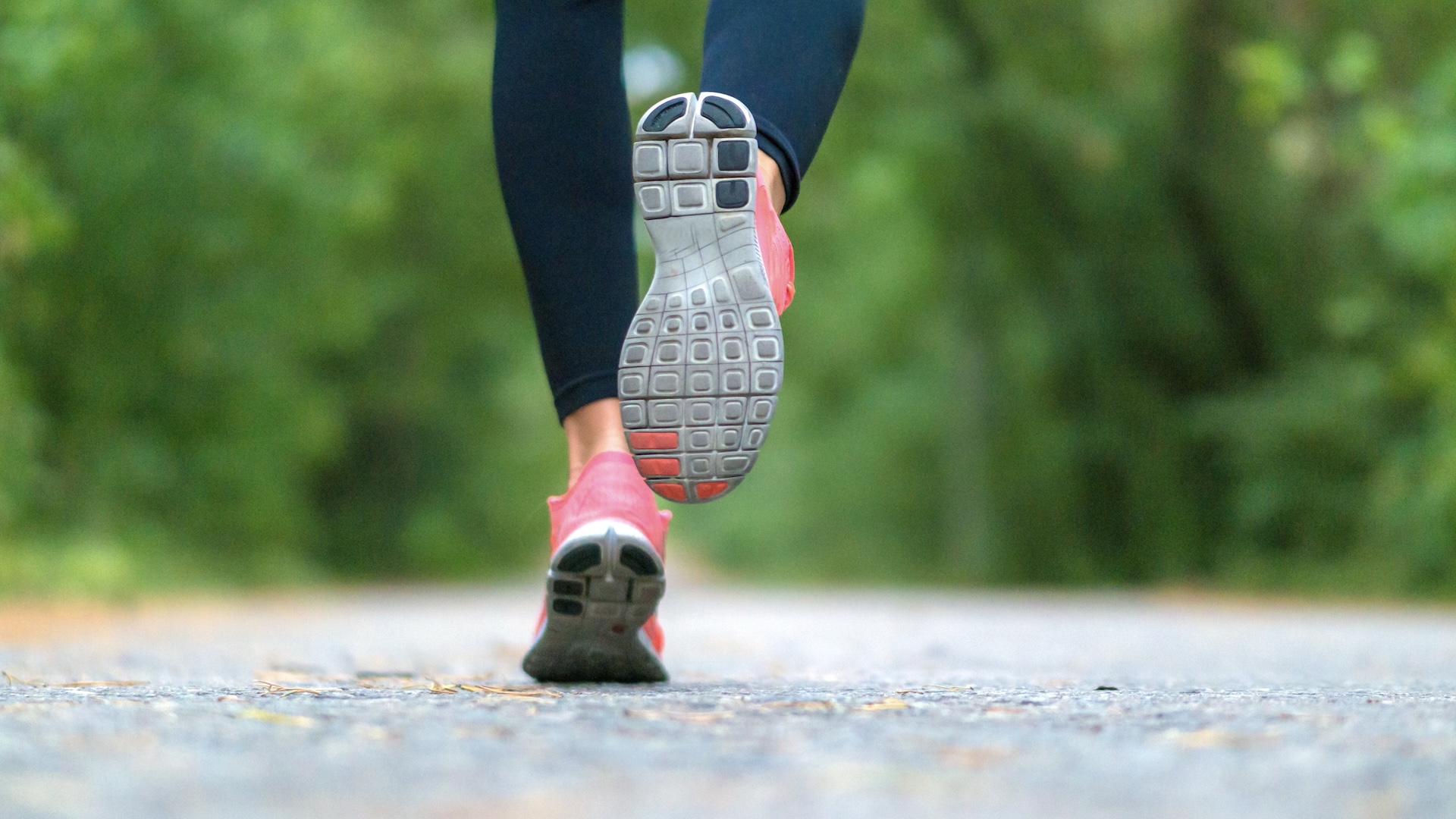
1. So much cushion
I may not need inches of foam on the trail, but I need it on the road. There isn't definitive evidence that running on a hard surface is worse for your joints, though a 2023 study does suggest that surface changes how we run, but I do notice more knee pain on harder surfaces, and having lots of cushion underfoot does make a difference.
If you’re looking for a healthy stack, you might automatically reach for a pair of Hokas, but with a generous 42 mm under the heel, the Kinvara Pros give even the bounciest Hokas a run for their money. In fact, they’re so high that they’re technically illegal for racing in, but as I said, they’re an everyday trainer and like me, you might find that they absorb a lot of the shock so your knees don’t have to, while the rocker sole helps me push off from the toe effortlessly. They’re like a trampoline, but not the kind you tear your ACL on.
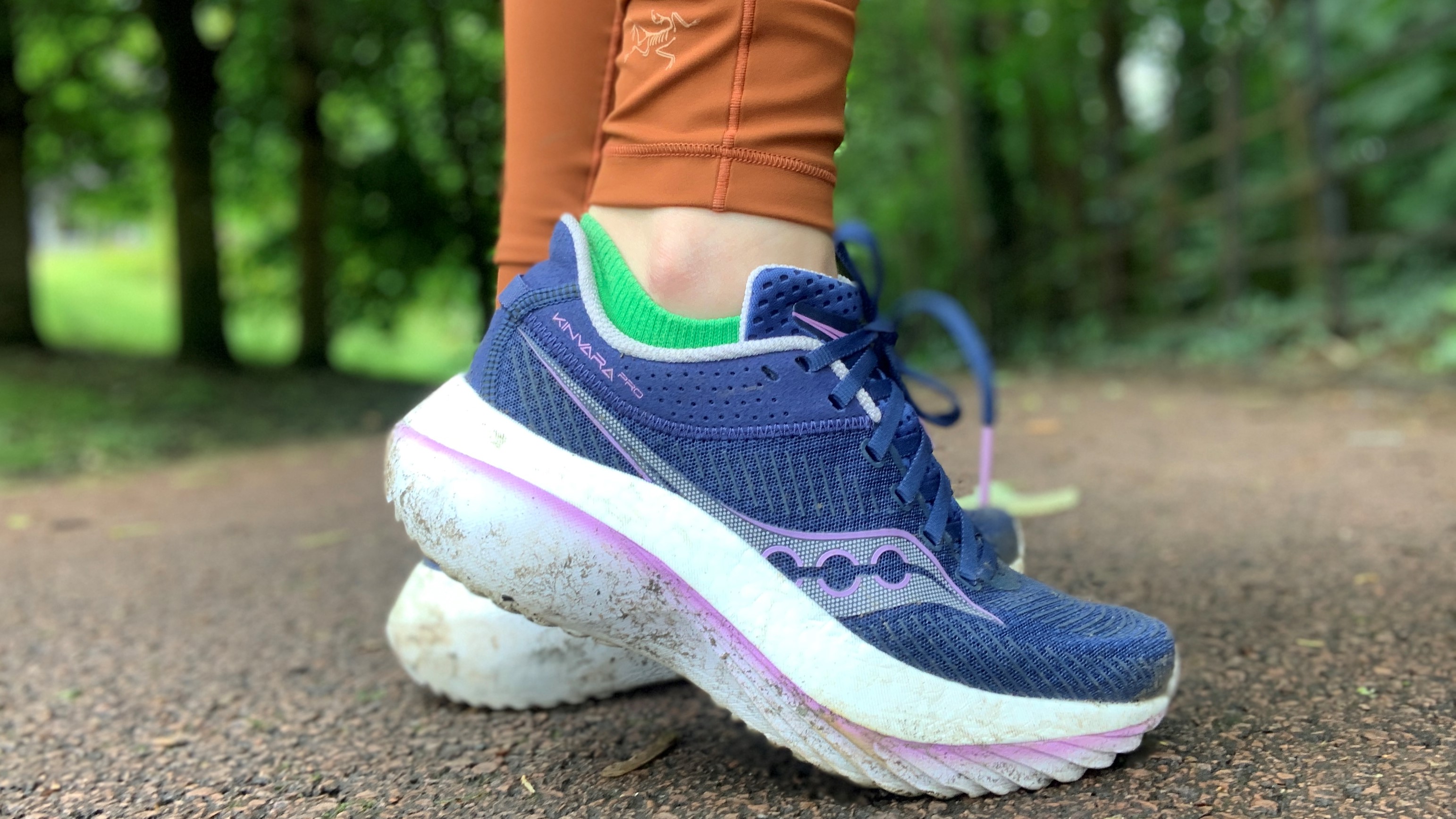
2. A 3/4 length carbon plate
After attending a lecture with UTMB podiatrist Olivier Garcin last year, I don’t necessarily agree with every running shoe having a carbon plate and I’m glad to see the tide turning on this a little. That said, I think the 3/4 plate in the Kinvara Pro allows for some of the benefits, especially for knee sufferers, while leaving a little foot dexterity.
Carbon plates claim to return more energy and improve your running economy, but according to Garcin, you need a strong foot to handle a carbon plate. Carbon plate shoes have a much stiffer sole, and if your foot has good strength and dexterity, this may be okay. But if you have a weaker foot where you can’t flex well at your toes, then a carbon plate can again mean you externally rotate at the hip and pronate. Not great for anyone running at high volume, and especially those of us with already at-risk knees.
You can read more about this in my article on finding the perfect running shoe, but suffice to say that I like having a carbon plate to help me run more efficiently, but the shortened version means my gait isn’t negatively affected.
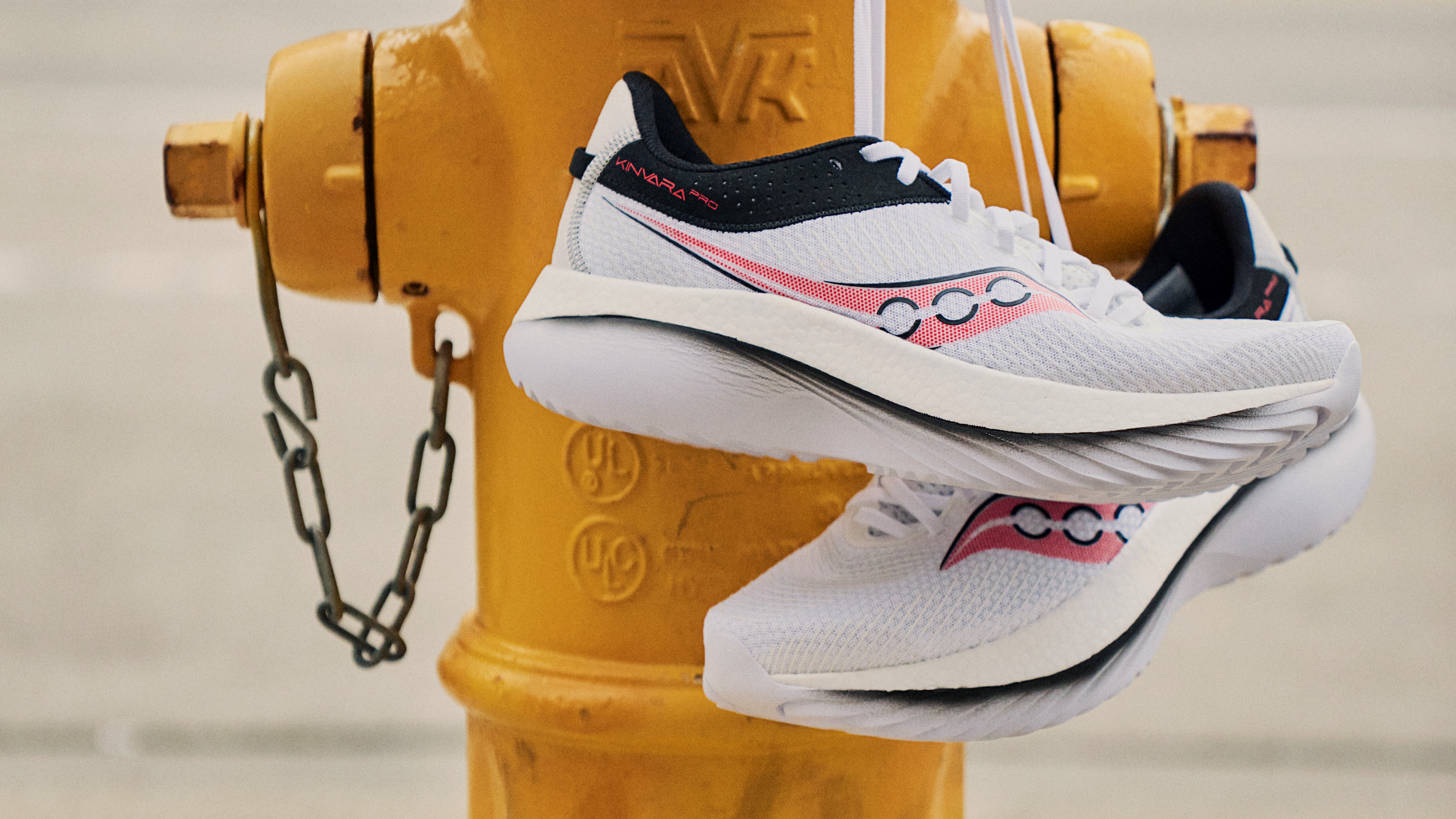
3. All day comfort
Everybody wants to find running shoes that get the job done without causing discomfort, but I find this has become much more important to me post-surgery. After all, if a shoe pinches or rubs somewhere, I’m more likely to adjust my gait and that in turn can spell trouble for my knee.
The Kinvara Pros were delightfully comfortable out of the box, and it’s not just because of all that cushy foam either. The tongue is plump and soft where many running and hiking shoes hurt the top of my feet thanks to my high arches and the uppers are nice and breathable to reduce rubbing. This means that I can run for miles without even thinking about my feet, never mind changing my gait, and my knee can get all the benefits of running.
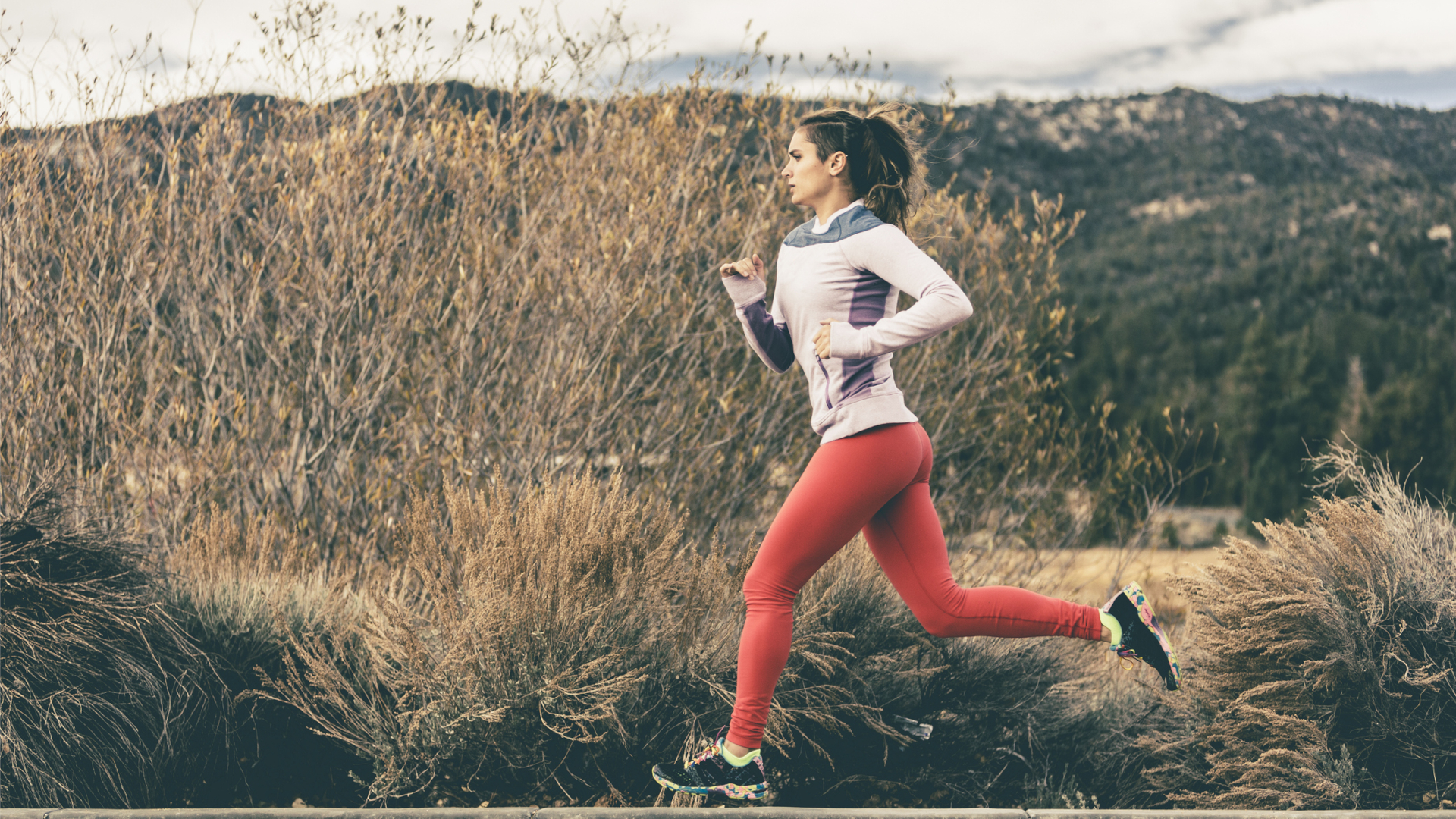
4. Versatile
Finally, I’ve found the Kinvara Pros to be a really versatile shoe. They’re fantastic for sprint workouts and fast runs and they go the distance on long runs too. This means that I don’t have to switch up my road running shoes between workouts.
Now, you might be thinking that studies show that rotating between two pairs of shoes is actually beneficial, and you’re right. A 2015 study found that it can decrease injury risk, which is a good thing if you’ve had knee surgery, but since I already switch between road running shoes and trail running shoes, I don’t also want to be switching between multiple road shoes as this could negate the benefits. The Kinvara Pros' ability to handle different types of run means that if I’m on the tarmac, they’re on my feet, and my knee is happy about it.
Julia Clarke is a staff writer for Advnture.com and the author of the book Restorative Yoga for Beginners. She loves to explore mountains on foot, bike, skis and belay and then recover on the the yoga mat. Julia graduated with a degree in journalism in 2004 and spent eight years working as a radio presenter in Kansas City, Vermont, Boston and New York City before discovering the joys of the Rocky Mountains. She then detoured west to Colorado and enjoyed 11 years teaching yoga in Vail before returning to her hometown of Glasgow, Scotland in 2020 to focus on family and writing.

